#NatureZen: Leaving the Nest
words + photos by Melissa McMasters; comic by Rosemary Mosco of Bird and Moon
In your recent outdoor wanderings, you may have come across one of spring’s great gifts: the baby bird! Many of our resident songbirds are busy raising their young right now, training them to fly and find food. A baby bird that has begun to develop feathers and explore outside of the nest is a fledgling, and those are the birds we’ll be meeting today.
Here you can see a Carolina wren fledgling on the left and an adult on the right. Note the fledgling’s short tail feathers; they’re enough to propel the bird awkwardly on short-distance flights. You can also see a trace of what some birders affectionately call “clown mouth”–a yellow coloration around the bill. This is left over from when the birds were tiny nestlings, gaping with bright yellow mouths that make it easy for their parents to come drop food into.
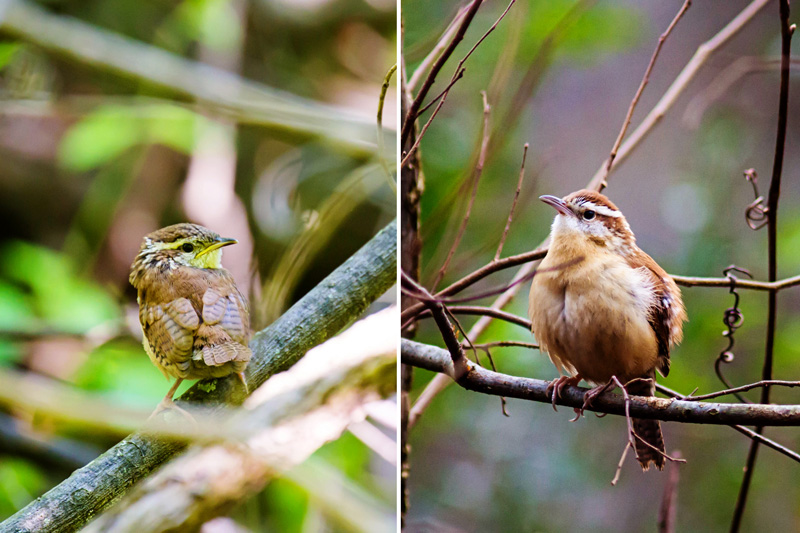
You can see the difference between the bright mouth of a young Carolina chickadee and an adult’s, which has turned fully black.
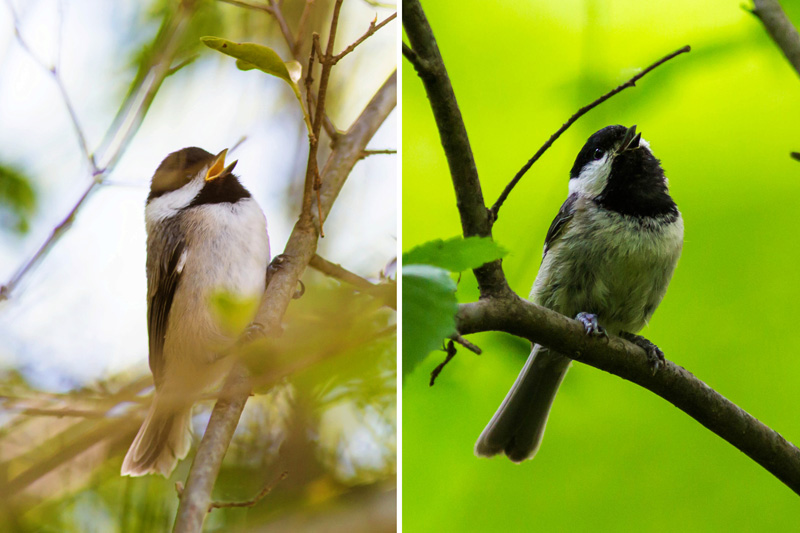
Another clue that you’re looking at a fledgling can sometimes be eye color. Adult brown thrashers are known for their yellow eyes. The fledgling on the left has blue eyes that will change as it matures. (There’s another clue here, and that’s the fledgling’s extended hangout time in the middle of a busy trail. Adults are much faster to move out of the way, so approach the fledglings slowly and give them time to move to safety.)
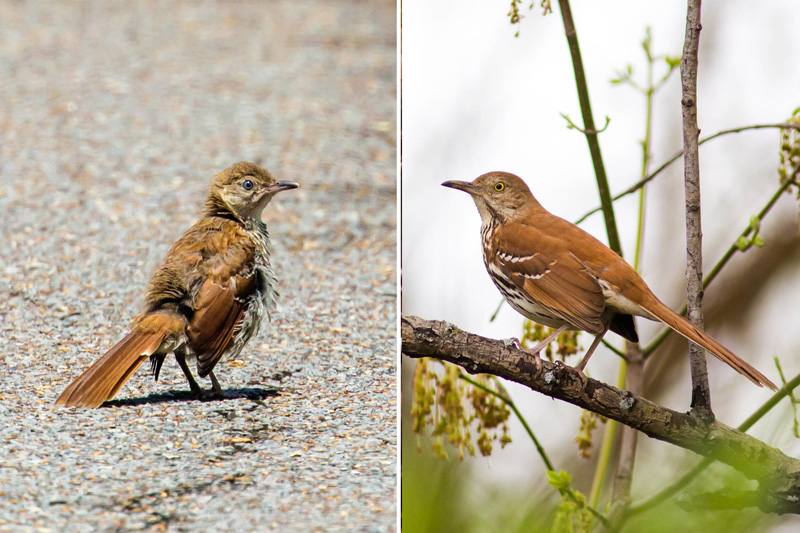
Sometimes fledglings and juvenile birds have variations in the colors of their feathers too. This young Eastern phoebe has a paler head than the adult, and its wings show reddish bars, where adults are largely gray with some faint white barring.
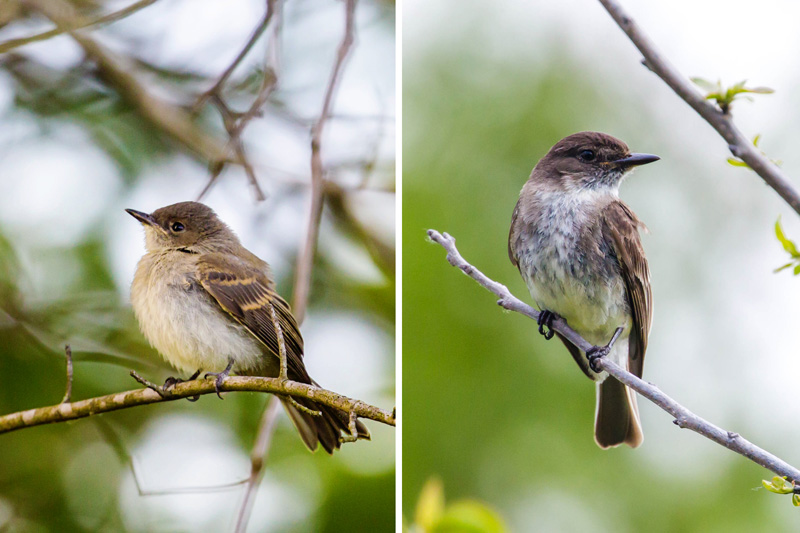
In the case of the Eastern wood-pewee, it’s the adult that has the more prominent wingbars. The adult’s coloring has more contrast overall.
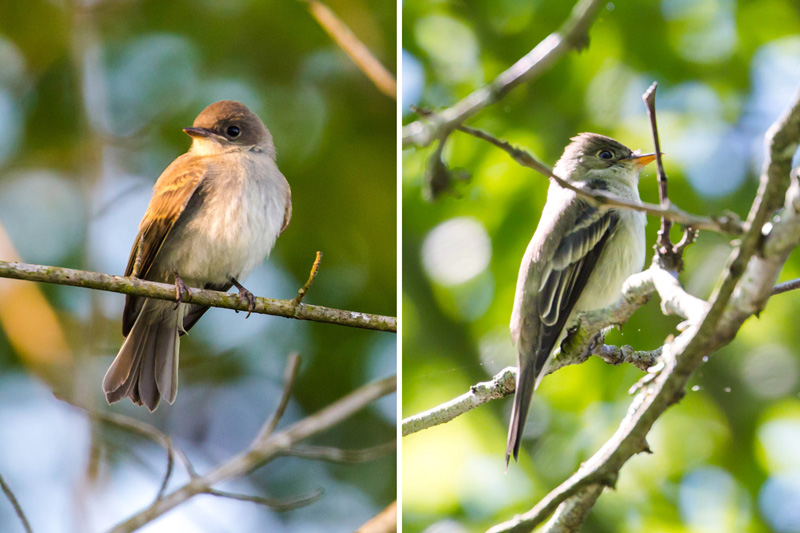
Sometimes, as with Eastern bluebirds, fledglings bear little resemblance to the adult birds. Baby bluebirds are gray, spotted or splotchy, and have a little white halo around their eyes that reminds me of a “Peanuts” character.
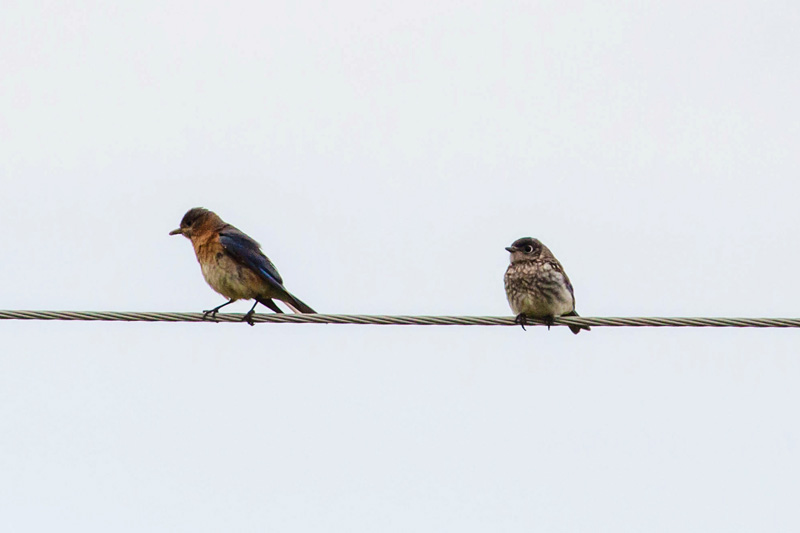
What differences can you spot between the fledgling and adult tufted titmouse? One thing I’m sure about: these often-belligerent, scolding little birds would be deeply offended at being called “cute.” (They are, though!)
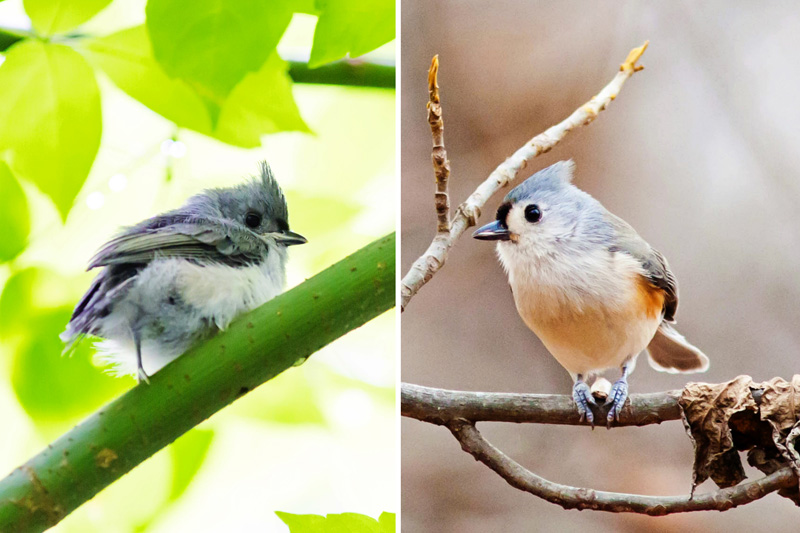
Today’s PSA: It’s fun to spot baby birds, but it can also be alarming if we see them outside of the nest. Remember that the best thing you can do for a baby bird is to make sure it’s raised by its parents if at all possible. Attempting to move an uninjured baby bird often dooms it rather than saves it. Last week we recommended Bird and Moon comics; here’s a great one about what to do if you encounter a baby bird.
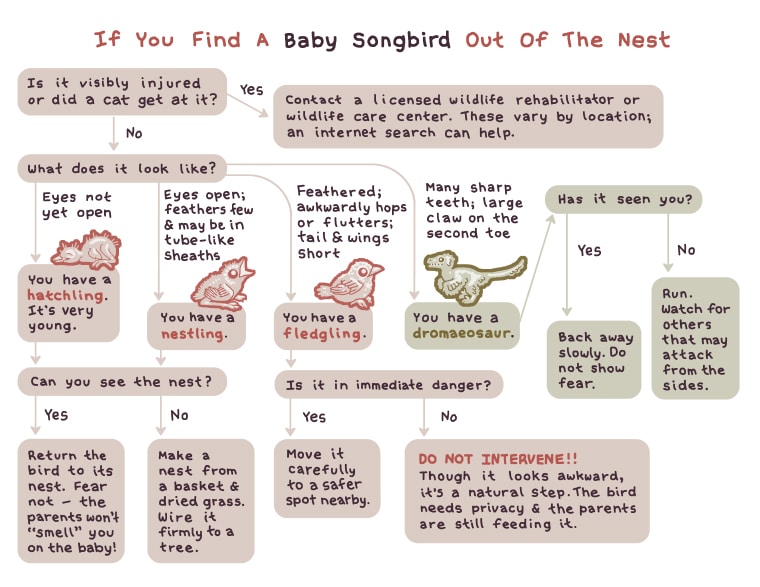
This instruction sheet from Healers of the Wild is a more detailed guide to how to respond, including how to prepare a baby bird for transport to a wildlife rehabilitator if necessary. The best chance for a baby bird is its mother, so most of the time the most direct intervention we need to make is keeping cats indoors.



